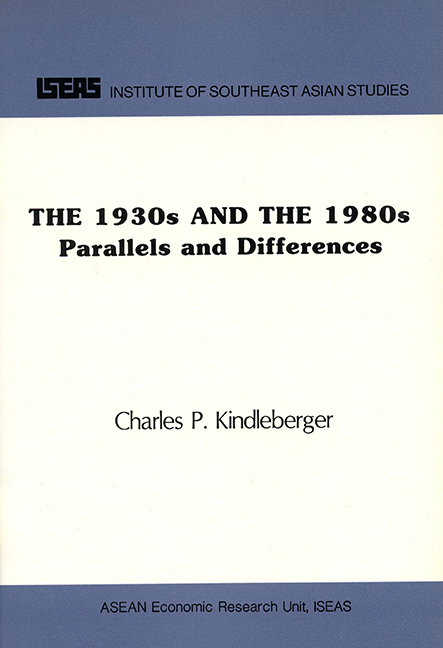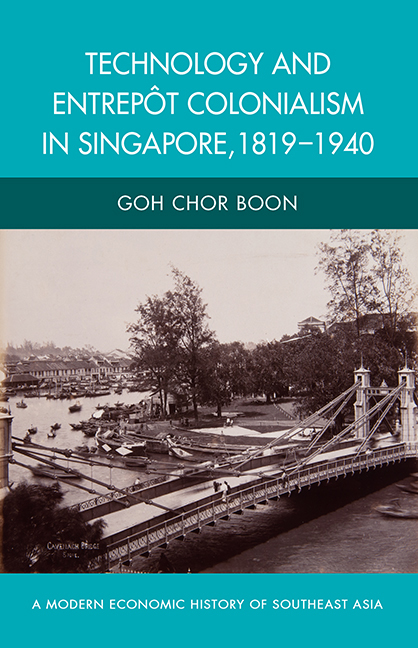Refine search
Actions for selected content:
26946 results in Economic history
1 - Introduction
-
- Book:
- A Concise History of International Finance
- Published online:
- 05 October 2015
- Print publication:
- 22 October 2015, pp 1-14
-
- Chapter
- Export citation
Index
-
- Book:
- A Concise History of International Finance
- Published online:
- 05 October 2015
- Print publication:
- 22 October 2015, pp 336-361
-
- Chapter
- Export citation
8 - British recovery and attempts to imitate in the US, France, and Germany, 1825–1850
-
- Book:
- A Concise History of International Finance
- Published online:
- 05 October 2015
- Print publication:
- 22 October 2015, pp 166-189
-
- Chapter
- Export citation
13 - From turmoil to the “Great Moderation,” 1973–2007
-
- Book:
- A Concise History of International Finance
- Published online:
- 05 October 2015
- Print publication:
- 22 October 2015, pp 272-293
-
- Chapter
- Export citation
9 - Financial globalization takes off: the spread of sterling and the rise of the gold standard, 1848–1879
-
- Book:
- A Concise History of International Finance
- Published online:
- 05 October 2015
- Print publication:
- 22 October 2015, pp 190-209
-
- Chapter
- Export citation
6 - The rise and spread of financial capitalism, 1720–1789
-
- Book:
- A Concise History of International Finance
- Published online:
- 05 October 2015
- Print publication:
- 22 October 2015, pp 100-133
-
- Chapter
- Export citation
10 - The first global financial market and the classical gold standard, 1880–1914
-
- Book:
- A Concise History of International Finance
- Published online:
- 05 October 2015
- Print publication:
- 22 October 2015, pp 210-230
-
- Chapter
- Export citation
Frontmatter
-
- Book:
- A Concise History of International Finance
- Published online:
- 05 October 2015
- Print publication:
- 22 October 2015, pp i-iv
-
- Chapter
- Export citation
11 - The Thirty Years War and the disruption of international finance, 1914–1944
-
- Book:
- A Concise History of International Finance
- Published online:
- 05 October 2015
- Print publication:
- 22 October 2015, pp 231-252
-
- Chapter
- Export citation
12 - The Bretton Woods era and the re-emergence of global finance, 1945–1973
-
- Book:
- A Concise History of International Finance
- Published online:
- 05 October 2015
- Print publication:
- 22 October 2015, pp 253-271
-
- Chapter
- Export citation
List of figures
-
- Book:
- A Concise History of International Finance
- Published online:
- 05 October 2015
- Print publication:
- 22 October 2015, pp vii-ix
-
- Chapter
- Export citation
References
-
- Book:
- A Concise History of International Finance
- Published online:
- 05 October 2015
- Print publication:
- 22 October 2015, pp 313-335
-
- Chapter
- Export citation
4 - The rise of international financial capitalism: the seventeenth century
-
- Book:
- A Concise History of International Finance
- Published online:
- 05 October 2015
- Print publication:
- 22 October 2015, pp 52-71
-
- Chapter
- Export citation
3 - The Italians invent modern finance
-
- Book:
- A Concise History of International Finance
- Published online:
- 05 October 2015
- Print publication:
- 22 October 2015, pp 28-51
-
- Chapter
- Export citation
14 - The sub-prime crisis and the aftermath, 2007–2014
-
- Book:
- A Concise History of International Finance
- Published online:
- 05 October 2015
- Print publication:
- 22 October 2015, pp 294-312
-
- Chapter
- Export citation

Indonesia's Economy since Independence
-
- Published by:
- ISEAS–Yusof Ishak Institute
- Published online:
- 21 October 2015
- Print publication:
- 09 May 2012

The Indonesian Development Experience
- A Collection of Writings and Speeches
-
- Published by:
- ISEAS–Yusof Ishak Institute
- Published online:
- 21 October 2015
- Print publication:
- 20 September 2011

Regional Outlook
- Southeast Asia 1993-94
-
- Published by:
- ISEAS–Yusof Ishak Institute
- Published online:
- 21 October 2015
- Print publication:
- 01 January 1993

The 1930s and the 1980s
- Parallels and Differences
-
- Published by:
- ISEAS–Yusof Ishak Institute
- Published online:
- 21 October 2015
- Print publication:
- 01 January 1989

Technology and Entrepot Colonialism in Singapore, 1819–1940
-
- Published by:
- ISEAS–Yusof Ishak Institute
- Published online:
- 21 October 2015
- Print publication:
- 04 June 2013
